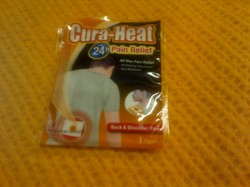On occasion, hospital workers and others in the community may encounter a microorganism and hence have risk that he or she will acquire an infection. Though the term "postexposure prophylaxis" is commonly a reference to prevention of human immunodeficiency virus transmission, the procedure indeed has to do with many other microbes which are capable of spread to humans [1].
It is important to know that when someone encounters a microorganism, he or she may be in a position to give it to patients, family members, sexual partners, hospital staff, and other individuals in the community. These situations require clinical evaluation as well as counseling of all parties who may be in the network at risk [1, 2].
The medical team may consist of infection control nurses, primary care physicians, and specialists who are able to read and interpret reputable literature on the subject [1].




 The Reality of Aspirinon 05/24/2021
The Reality of Aspirinon 05/24/2021
 An Old Microbeon 03/31/2021
An Old Microbeon 03/31/2021
 Coronavirus and Mental Illnesson 02/14/2021
Coronavirus and Mental Illnesson 02/14/2021
 Acute Ischemic Strokeon 12/25/2020
Acute Ischemic Strokeon 12/25/2020


Comments